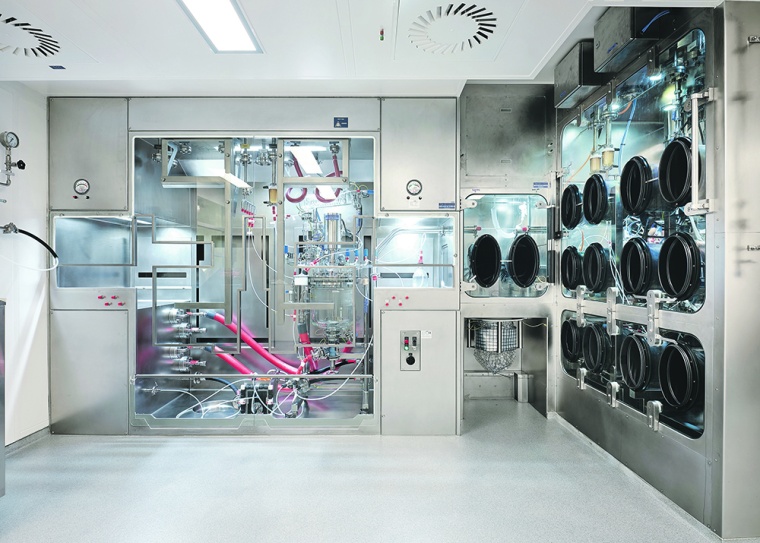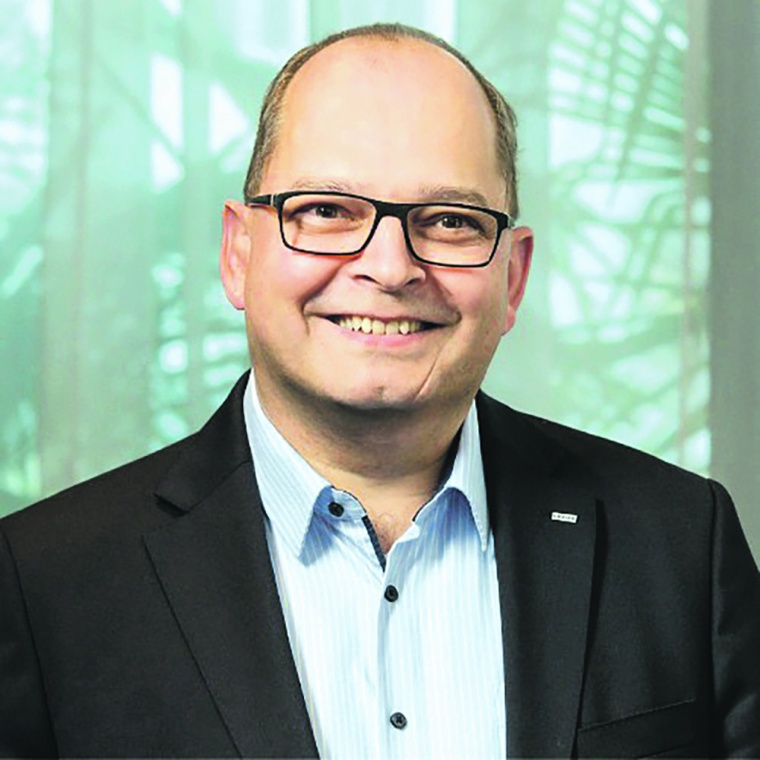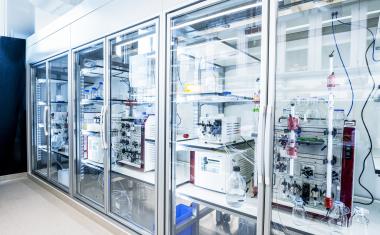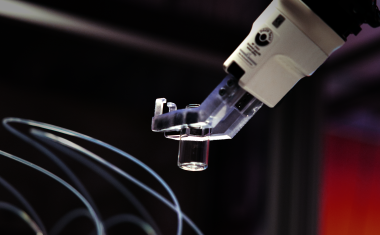The Rise of HPAPI Molecules
For biopharma leaders it is more critical than ever to secure the capabilities to contain, handle, develop and manufacture highly potent APIs.

Several convergent trends increasingly define the small molecule landscape. A growing proportion of the drug development pipeline is made up of more complex, highly potent APIs (HPAPI). These molecules are commonly associated with innovative cancer treatments, such as antibody-drug conjugates (ADC), but they also have shown effectiveness in treating autoimmune diseases, diabetes and a range of other indications. HPAPI molecules now make up over 30 % of the drug development pipeline.
Alongside the growth in HPAPI molecules, smaller companies are increasingly driving the development of innovative molecules and products. These companies are submitting higher numbers of drug products for regulatory approval as specialty medicines, which often requires meeting accelerated timelines to market. Additionally, when these products are designed to treat rare diseases with small patient populations, they face uncertain demand if or when they reach the market. This uncertainty underscores the importance of flexible manufacturing capacity that can help avoid regulatory changes (e. g., due to change of scale) in response to an increase or decrease in demand.
For biopharma leaders, these trends mean it is more critical than ever to secure the capabilities to contain, handle, develop and manufacture increasingly complex molecules, including HPAPI. For many companies, particularly small, emerging and even virtual biopharma companies which lack extensive in-house manufacturing capabilities, the path forward typically includes working with an external partner such as a contract development & manufacturing organization (CDMO). In these cases, it is essential to select a partner with the appropriate experience and capabilities to help advance and develop innovative, life-saving HPAPI products. The optimal partner will also anticipate clinical fluctuations throughout the entire clinical development timeline, make proactive suggestions on process improvements and manufacturing concepts and thereby minimize time to the next clinical milestone and to the market.
HPAPI Molecules: Efficacious at Extremely Low Concentrations
HPAPI molecules represent a new way to use small molecules to deliver innovative patient therapies, often incorporating more precise delivery mechanisms. The shift toward the use of HPAPI has led to the emergence of a pipeline of more effective medicines, with potentially lower dose requirements and fewer side effects. These molecules are efficacious at extremely low concentrations, in doses as low as 1 mg/d. On the downside, their high potency means they can cause harm if handled improperly; they frequently have occupational exposure limits (OELs) at or below 10 μg/m3 of air as an 8-hour time-weighted average.
Interest in highly potent drugs is largely driven by oncology research and more targeted therapies across a number of indications. Currently, over 1,000 highly potent small molecules are in development, with approximately 30 % targeting oncology, 20 % for antidiabetics, 20 % for autoimmune diseases and the remainder for other indications.
Due to their wide range of potential uses and benefits for patients, the growth in the HPAPI market is outpacing the overall API market by almost two-to-one. The segment is growing at about 10 % compound annual growth rate (CAGR), compared to 6 % for the overall small molecule market. The market value from existing and new HPAPI product launches is expected to double between 2018 and 2025, from around $18 billion to $35 billion.
Safety Is a Top Priority in HPAPI Manufacturing
This trend towards greater use of HPAPI molecules presents significant potential benefits for patients, but it also comes with handling, containment and manufacturing challenges for innovators and their development partners, since these molecules can be dangerous if mishandled. Safe HPAPI handling can be ensured by focusing on facility design, protection strategy & procedures and personal protective equipment.
Sophisticated facility design elements include several tools to ensure safe handling of potent materials. Units are available for primary and secondary containment of the entire process including solid charging containment, sampling and unloading, with ranges from 50 g to 200 kg of starting material. For product sampling, liner ports can help lock in and lock out glass sampling bottles. To aid in the product unloading process, manufacturers can use endless liner systems and customized flex isolators (in some cases more rigid, hard-walled isolators may be preferred).
Well-designed protection strategies include nuanced and detailed processes for how workers can use and clean HPAPI manufacturing assets. For example, cleaning procedures should include clear acceptance criteria for opening equipment after precleaning. And the safest equipment start-up sequences are embedded into the risk assessment process, with leak test and rinse prior to production and defined criteria allowing for production release.
Personal protective equipment is of course extremely important to keep workers safe. Reliable equipment including coveralls, hoods, gloves, chemical suits, supplied air and other implements should be available in ample supply for anyone working with highly potent materials. However, the use of PPE should be the last resort and not the main method of protection for routine operations. Adequate organizational measures and procedures can often accommodate PPE-free operations, keeping the PPE only for non-routine operations.
An important complement to technical containment equipment is a well-trained workforce with a strong commitment to a culture of safety. While a culture cannot be bought and installed like a piece of manufacturing equipment, leaders can take steps to encourage the right mindset among workers. When it comes to building out a training program, facility operators must stress that there are no compromises possible in compliance. And fielding idea submissions from employees and managers for how to improve safety further can increase motivation and dedication among staff members.
“Demand for highly potent small molecule API manufacturing and development services is expected to exceed $7.5 billion by 2023.”
The Trend toward HPAPI Outsourcing
In response to the growing need for sophisticated HPAPI manufacturing, some CDMOs are building flexible, integrated capabilities dedicated to HPAPI development from preclinical to commercial production. These programs place an emphasis on safe procedures from equipment start-up to handling, cleaning and decontamination, and they come as outsourcing of HPAPI production is increasing at a rapid pace. Demand for highly potent small molecule API manufacturing and development services is keeping pace with the overall HPAPI market value, and is expected to exceed $7.5 billion by 2023, more than doubling the $3.5 billion market size in 2015.
One example is Lonza’s Center of Excellence for HPAPI Manufacturing and Development at our Visp (CH) site, which features a comprehensive platform including a highly skilled team, extensive evaluation and training procedures and state-of-the-art facilities. Lonza has capabilities in place to safely handle HPAPI to exposure levels up to 100 ng/m3 across all manufacturing scales (up to 10 m3), allowing for production to scale up and down flexibility as needed. For more potent compounds such as ADC payloads (containment down to 1 ng/ m3), Lonza has separate and segregated capabilities at the Visp site, where quantities from grams to multiple kilograms of compound can be safely handled (Fig. 1).
“Alongside the growth in HPAPI molecules, smaller companies are increasingly driving the development of innovative molecules and products.”
What it Means for Biopharma Innovators
For biopharma innovators, working with a single partner across the development pipeline can shorten timelines and reduce risk. CDMO partners can access in-house experts across a range of drug substance and drug product challenges, engage in technology transfer activities and exchange information, ideas and best practices across the drug development cycle. A study from Tufts Center for the Study of Drug Development has found that a single-source outsourcing model can shorten the drug development cycle by 14 weeks and lead to financial gains of up to $45 million. For HPAPI compounds, drug product capabilities will include parenteral formulations/sterile fill-finish services and oral delivery options such as liquid-filled hard capsule technology. Contained particle engineering can also be required for safe and effective jet milling or spray dry processing. Outsourcing development to a qualified CDMO can help meet accelerated production timelines and help deliver life-saving therapies more quickly to patients who need them.
Conclusion
As HPAPI molecules continue to play a growing role in new pharmaceutical products, biopharma companies will need access to flexible, sophisticated manufacturing assets to bring their innovative products to market and to patients. Given the high potency of these molecules, safety and containment are key components of effective HPAPI manufacturing.
Working with a qualified CDMO can help biopharma companies advance HPAPI compounds and products at high speed and low risk. When evaluating external partners, biopharma innovators should base their choice on the CDMO’s experience in the HPAPI space and the containment, handling and manufacturing assets the partner brings to bear.
Maurits Janssen, Senior Director, Strategic Business Development, Small Molecules, Lonza Pharma & Biotech, Basel, Switzerland
References can be requested from the author.


















